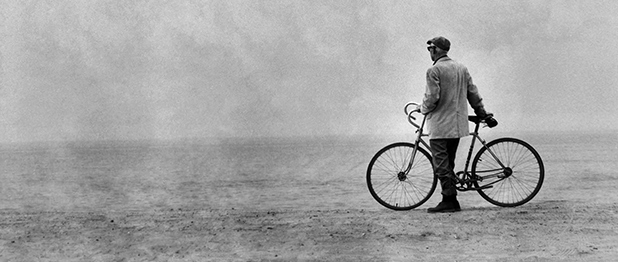ANTON HANSEN WAS A PALE, mouse-like man, with enough hair to part on the side, and a thin mustache that gave one the sense that Mr. Anton Hansen even in maturity was never able to grow a full beard. An iconic writer, he died in March 1940, three months short of the Soviet takeover.
It was as if God had spared him his nation’s tragic fate.
Mr. Hansen wore a great coat, and at times a stylish hat, and he worked himself hard. Hansen, who published under the name AH Tammsaare, was the most disciplined producer of prose. Perhaps only old Charles Dickens rivaled him in output. In seven years, between 1926 and 1933, he wrote the five-volume series, Truth and Justice, which endeared him to Estonians for all time.
They are still in love with it, and when the film came out, I was assailed from all sides to see it. “You have to go see Truth and Justice,” they told me in all the cafes. “This is a film about us.”
I had seen a few theatrical productions of Truth and Justice in the past, and found them unsettling. I tend to sympathize with marginal characters, the neurotic outcasts. Whenever poor Juss strung himself up from a tree branch in a stage production of Truth and Justice, it bothered me. I had been bullied too, and to see him humiliated in public, as he was, was too much for me.
“If this was an Italian movie,” I told people, “Juss would have assassinated Andres in church.”
Estonians were often shocked by this comment and they would excuse Andres’ worst behavior by noting that he was quite industrious and was trying to run a farm. This last part was the most important. These personal grievances that have fueled centuries of mafia turf wars across the mezzogiorno didn’t matter in the sloping cold hills of Vargamäe. Andres was a hard worker. Everything was forgiven.
What Truth and Justice had taught me, was that I was not an Estonian. I would never understand their peculiar work fetish, their tolerance of some behaviors, which they deemed normal or normaalne, and their strange contempt for others. I was, by virtue of not being born into their culture, not normal. Ebanormaalne. Did I need to go watch a long movie to be reminded of that?
The film though disarmed me of my old feelings. Even in mid-March, many weeks after its release, the showings in Viljandi sell out. The 2 pm showing was sold out. The 5 pm was full. I sat there in the dark waiting, dreading the moment when I would have to see Juss take his life, unhappy about having to sit through nearly three hours of watching some workaholic saw wood.
Instead, something strange happened. I didn’t identify at all with Juss, the softhearted suicidal neurotic. I didn’t identify with Andres and his Bible. As far as I was concerned, he could have just gone to the city and got a proper job. I’m sure the factories were hiring, and the houses in Kalamaja were new back then. As for Pearu, well, we have all had our asshole neighbors. It comes with the territory. To hell with swamp draining, stone removing, that workaholic pastoral life of shitting dogs and mud-stuck cows, all for the sake of some great harvest that never comes.
I don’t even like potatoes.
No, I didn’t identify with any of the men of Vargamäe, or if any, maybe the bartender who from time to time quips, “Litsid mehed need Vargamäe omad” (“What a bunch of bitchy men, these Värgamäe guys”) from behind the counter with a shrug. At least someone was smart enough to make some money off them. If there had been one Petrone at Vargamäe, he would have been that bartender.
Actually, I found myself sympathizing with Mari the most. This poor overstretched woman. She only has two breasts and yet suddenly there are half a dozen kids to feed. She works all day and it’s never enough. She gives herself over to a new God, Andres, yet she still clings to the memory of her deceased first husband, Juss, keeping the note that had driven him to suicide and the rope he had used to do it in a chest. She loved him, despite his weakness, because he still had a soul.
So the next time you are in a country pub and the bartender pours you a glass of vodka, lift it not for Andres, Juss, Pearu, or any of the bitchy men of Vargamäe. Lift it for poor Mari, who life fucked this way and that, and who in the end was somehow still able to sleep another night.

 THIS IS NOT MEANT to be a cynical rejection of popular ideas concerning romance and the eternal bonds between two people. When I sat down to write this morning, I could only think of how recently, my desire has increased to be alone, to sense the world and all its beauty in solitude.
THIS IS NOT MEANT to be a cynical rejection of popular ideas concerning romance and the eternal bonds between two people. When I sat down to write this morning, I could only think of how recently, my desire has increased to be alone, to sense the world and all its beauty in solitude.
